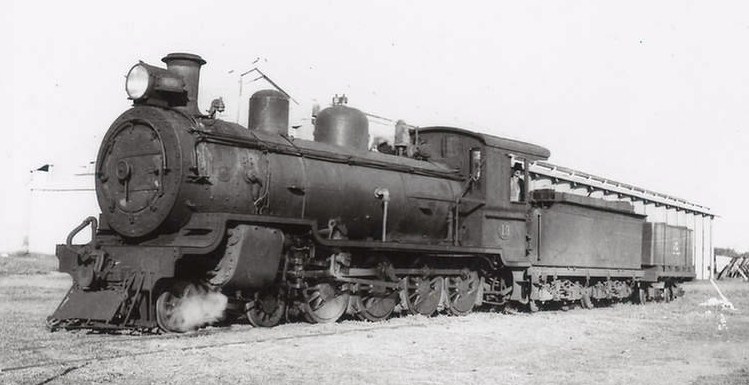By 1854 Melbourne had opened it’s first railway line. A 2.5-mile (about four-kilometre) track from Flinders Street Station to Sandridge (today known as Port Melbourne). A short ride in modern terms but for the times, the start of connecting the island coast to coast and revolutionizing the way goods and transportation was thought of.

Nearly 100 years later, the above photograph of MRWA D class was captured at Arrino in 1943. The massive 78.85 long tons machine in all its steam powered abilities look majestic against the barren landscape. It’s hard to imagine that this Philadelphia, American made train was able to travel from one part of the world to the other in the 1940s. Sometimes the timeline of technology gets warped when photographs from the Titanic in 1912 look practically the same quality as one in the 1950s or even 60s. Still, a massive train of such weight arriving and landing on the tracks in Australia is a wonderful example of the human ability to innovate and spread such technologies across all parts of the world, land or air causing no limitations.
A small tidbit on wikipedia explains: “The two members of the A class, nos D19 and D20, were ordered in 1919 and completed in 118 working days. They were dismantled, boxed, and shipped on 5 April 1920, before entering service later that year.[1]“
Here we learn that not only were trains made to order but could be completed in less than half a year. The shipping process required dismantling the machine and sending instructions along the way to build it once again when it arrived on the island. This might be an example of the benefits of Australian and American business thanks to the share knowledge of English language. Inherently, there wasn’t confusion at least not because of language itself.
When one thinks about it, Americans, Australians, British, even those in India all have the benefit of understanding and speaking a common language, English. This allows cultures from all over the world to read about their histories, watch their documentaries, listen to their radio programs or podcasts, read their Blogs and so much more because the evolution of the language has tightly allowed us to continue to communicate.
I bring this up, because lately, I’ve been watching British documentaries on medieval history. The oral words of a silky smooth British educated narrator from nearly 20 years past speaks a language I can not only understand but gain an education in something I’m interest in. I don’t speak with such an accent nor use some of the words found in the British tongue, but through rote unconscious listening I understand it without fail. It’s a wonderful experience.
For a moment I am able to live the history of a culture an ocean away without ever needed to study or visit their antics. Purely the difference of accents is the only barrier. And just like the magnificent train sent in presumable giant wooden crates over the Pacific Ocean; language, thought and ideas can travel great distances and pop up in new locations with instruction that be can understood and build upon; and for that I am grateful to speak a language most of us take for granted. — KITE0080

